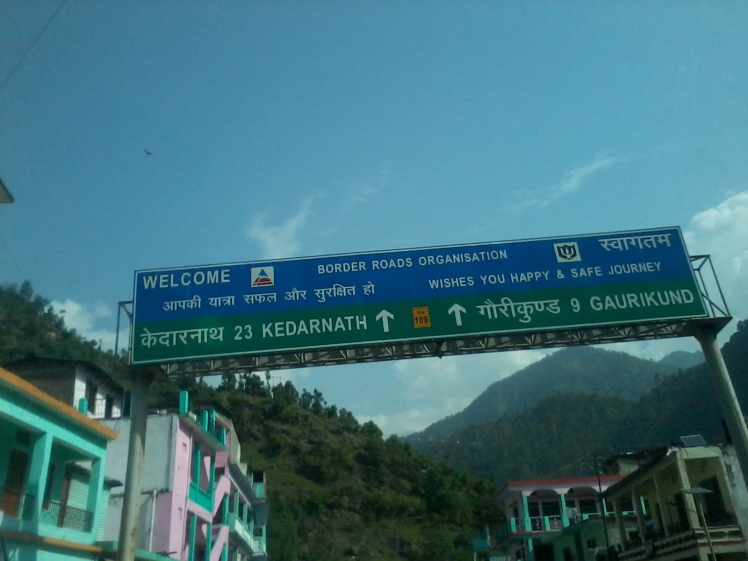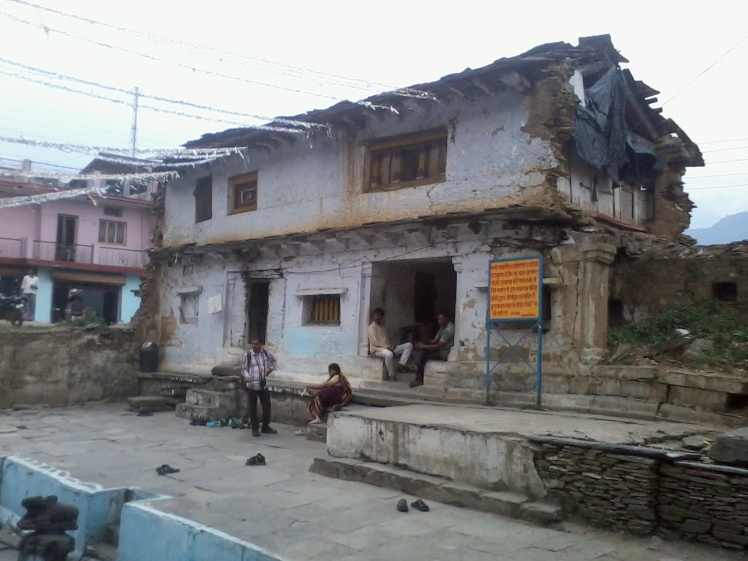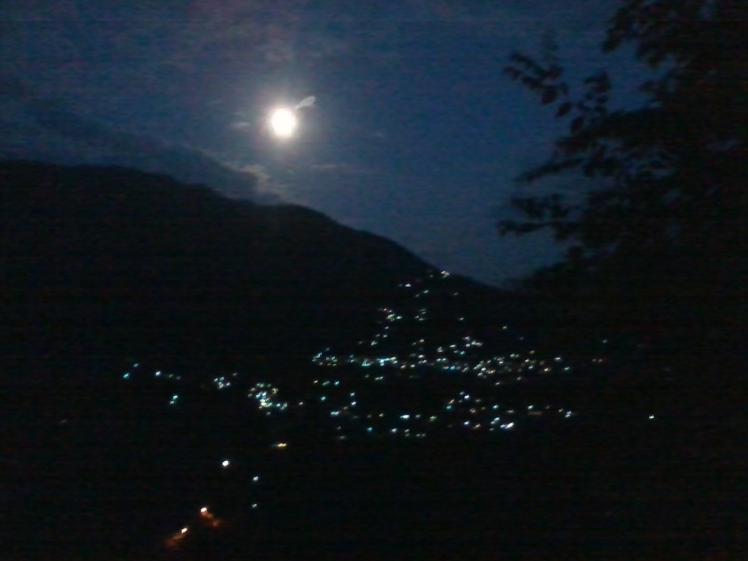My initial plan was to make the legendary Panchkedar trek, starting with Kedarnath. But after reaching Guptakashi and meeting a few people there, my plans changed completely.
Starting from Rishikesh at around 7.30 AM, I took a shared jeep for the five-hour journey to Rudraprayag. There I hopped onto another jeep for the two-hour drive to Guptakashi. Reached by 3 PM and checked into the Mandakini hotel, located on the main road of the town.

Guptkashi is known for its ancient Shiva temple, Kashi Vishwanath. “Gupt” means hidden, or secret. So this is supposed to be the “secret” Kashi, that no one is supposed to know about. In fact, many say that the Linga here is said to be the original Linga of Kashi Vishwanath in Benaras (more about that later.)
From the main road, it is a five to seven minute uphill climb through various quaint little shops and houses to reach the temple. At the end of the road I see a very old and dilapidated structure, which they indicate is the temple.


A couple of Sadhus are sitting outside the temple as I climb the steps. I enter the narrow tunnel-like entrance and it leads me into an open space. It feels as if I have walked a few hundred years back into an ancient time and space. Wanting to know more about the place I look around and see a young woman with matted hair, clad in maroon-red. She is just sitting there at peace with herself staring at the sanctum. I fold my hands in namaskar, and she reciprocates it with childlike glee and warmth in her eyes.

She is Kali Maa, from West Bengal. A few years ago, she dreamt that Devi Kali told her to go to this place in Uttarakhand. Although she did not know where it was and had never travelled in her life, she made the journey to Guptakashi and has been living here ever since. She is an apprentice disciple to Shaninath Baba, who is a Gorakhnathi Sadhu. Now, he is away on an errand. He takes care of a few orphan children’s stay, food and studies in the nearby village.
She tells me that this temple belongs to the Mahabharat Era, and even Sage Agasthya had spent some time here. The Linga is called an Ardhanareeshwara Linga – an embodiment of the Divine union of Masculine and Feminine. She asks me to go in and have Darshan.
In the center is the Manikarnik kund, a pond-like structure, with water gushing out of two spouts with full force. One spout is shaped as a cow-head, and another is of an elephant. I remember that Ganga itself originates from Gomukh – “Go” means cow and “mukh” means mouth.
Kali Maa had mentioned that one is Ganga and another is Yamuna. The water flow does not increase or decrease through the year. Its source is in some underwater stream. I also notice many locals coming and filling up cans and vessels here with this water. They probably use this for their domestic and culinary purposes. I taste the crystal clear water which is sweet and silky.

I go inside and after the Arathi, I sit inside the sanctum, eyes closed. With the silence of the sanctum and just the sound of water flowing continuously outside, I slip quickly into deep meditation. After forty minutes I come out and feel fully rejuvenated and energized. All fatigue from the seven hour Jeep ride through the tumbling mountain roads has evaporated.

As I came out of the temple, Shaninath Baba had come. He says that this is where Shiva proposed to Parvathi before marrying her at Triyugi Narayan. (Later I visit this temple, en route to Kedarnath). He reveals that, every year in November, the symbolic deity from Kedarnath stops at Guptakashi temple overnight before being taken to Ukhimath, the deity’s winter abode, for six months.
He also tells a legend that in 17th century, when the Mughal emperor Aurangazeb demolished the Kashi Vishwanath temple in Varanasi and constructed the Gnan Vapi Mosque, the Shiva linga was shifted to Guptakashi for safe keeping. The original Linga of Kashi Vishwanath is believed to have remained here from then.
He spoke in length about Guru Gorakhnath, the Nathi sect and their code of conduct. I realise that their life is one of severe austerities. Both Kali Maa and Shaninath spoke about Kalimath, a temple on the banks of Mandakini. Here, there is no deity, but just a Sriyantra plate consecrated by Adishankara. Another eight kilometre trek and there is Kalishila, which has a natural Sriyantra formation on a rock.
That night, I stayed at Mandakini hotel. From the balcony I could see Ukhimath on the opposite side of Mandakini river. It was a sight to behold.

The next day was Pournami, and the full moon shone bright and cool as if teasing and inviting me to meet her in Kalimath the next day, to see her full resplendent self 🙂
Nice 1. Generally we bye pass such places.
LikeLike